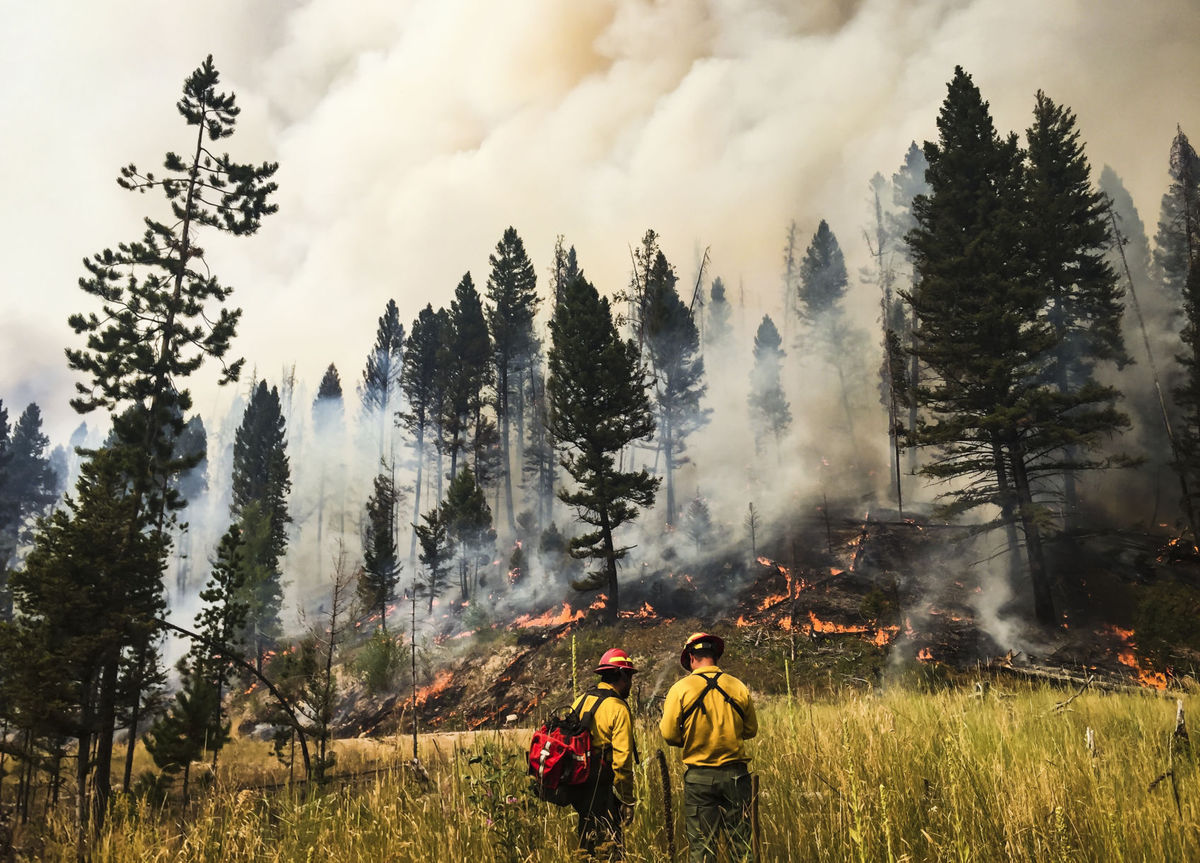Forest management is complex
Posted: October 12, 2017Source: Missoulian by KAREN WICKERSHAM and BRIDGET JOHNSON

During a fire season that has burned over 1 million acres, the state of Montana has spent $53.7 million battling wildfires.
Joy Ballewphoto
Montana is on fire, we’ve been breathing smoke for months, and it’s human nature to look for someone or something to blame, such as environmentalists or the U.S. Forest Service. But the fact is we can’t log our way out, we can’t fight our way out, we can only burn our way out through ongoing fuels treatments. Forest management is complex:
***
Logging vs. wildfire: It’s not a matter of timber sales or catastrophic wildfire. Logging is a component of forest management but without controlled, prescribed fire, timber sales alone do not significantly reduce the threat of wildfire. Our western forests are fire-dependent and have decades of undergrowth due to extreme fire suppression practices. Timber harvests are an important component of wise forest management, but do not address the level and type of fuel reduction needed to resist catastrophic wildfires. What will reduce fire potential is removing fuels through prescribed burning. Studies of over 3,000 fuel treatments that had wildfires in the past decade show an 89 percent reduced fire intensity. In other words — we have to fight fire with fire. The president’s 2018 budget cut Forest Service suppression, pre-suppression and fuels treatment by $320 million. This is the opposite approach of what is necessary to fight fires and preventively reduce fuels.
***
Climate change: It is real, it is not a hoax. The global temperature is increasing and the climate is changing due to the greenhouse gas emissions we have already produced leading to a rise in wildfires. Fact — wildfires have been increasing in frequency and duration over the last 30 years. They occur four times more often, burning more than six times the land area, and last five times as long. Snowpack is 20 percent lower than it was 60 years ago. Peak runoff comes two or more weeks earlier on average; March temperatures across Montana are, on average, about 5 degrees warmer than in the 1950s. Since 1970, temperatures in the West have increased almost twice the global average. Extended drought and the stress caused by the reduced water availability make the forests that once were resilient now vulnerable to mountain beetle attack. This adds to the fuels ready for wildfire ignition. We could clear-cut Montana and would still experience fire; one only needs to look to the east side fires (280,000 acres burned) this year to see that.
***
Money: Due to budget cuts to the Forest Service and the realignment of funds to fire management due in large part to effects of climate change, 51 percent of the Forest Service budget now goes wildfire compared to 16 percent in 1995. As more of the agency’s budget goes to aircraft and suppression, less money is available to do restoration and fuels reduction work that would reduce the threat of wildfires.
***
Wildland Urban Interface (WUI): Counties have a responsibility when issuing permits for subdivisions along forest boundaries. Fire-wise requirements, zoning and transportation planning all need to be done on private property along the boundary if fuels treatments and periodic prescribed fires are going to be successful in protecting homes from fire risk. The responsibility to protect homes should not fall on the shoulders of the Forest Service.
We can improve this situation if we work together, avoid blame and accept established scientific research. We all breathe the same air, recreate on national forest lands and depend on dollars generated from timber, recreation, fish and wildlife in our state. Let’s vote for leaders who seek long-term solutions based on facts and science, rather than knee-jerk, superficial solutions.
